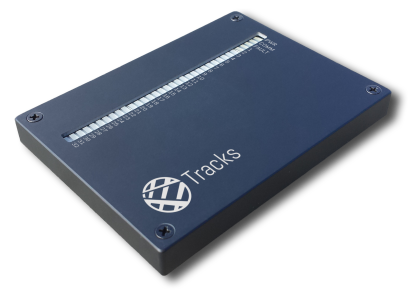

Tracks is the flexible interface layer between Stacks and your DUT (Device Under Test). It allows the connection of any line to any other line through a large relay multiplexer. When connected to the Core through the accessory bus, Tracks is a seamless expansion of the Core’s functionality. Just like the Core, it can be controlled using Python.
Tracks is a matrix of relays that can be configured with any number of relays enabled. The relays may control signals or power, as all relays are rated for 200V and 1A. All inputs are galvanically isolated from each other as well as the control circuitry. There are eight banks of four relays each. Among the four relays, a common line connects all the relays. This allows for easy signal/power multiplexing, yet allows for flexibility for more obscure applications.
As an example, Tracks would excel in the case where a Stacks Core needed to communicate with up to four serial UART devices on a DUT (or multiple DUT’s). The Core’s UART TX and RX would each run to a bank of relays’ common lines, and the DUT’s UART lines would connect into the same banks of relays. When communication was desired, the relays for any of the DUT’s UART lines would be connected or disconnected on command.
Tracks is enclosed in a black plastic shell with LED indication of relay status on the top. Tracks mounts via 0.1” pitch pins as a component on a PCB, or alternately attaches to a breakout board. Electrically, Tracks I/O are designed with industry-standard protection, and all relays are galvanically isolated from the control circuitry and each other.